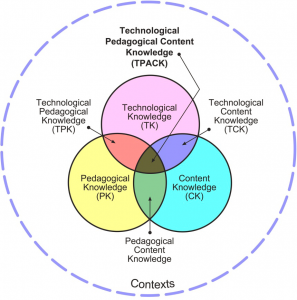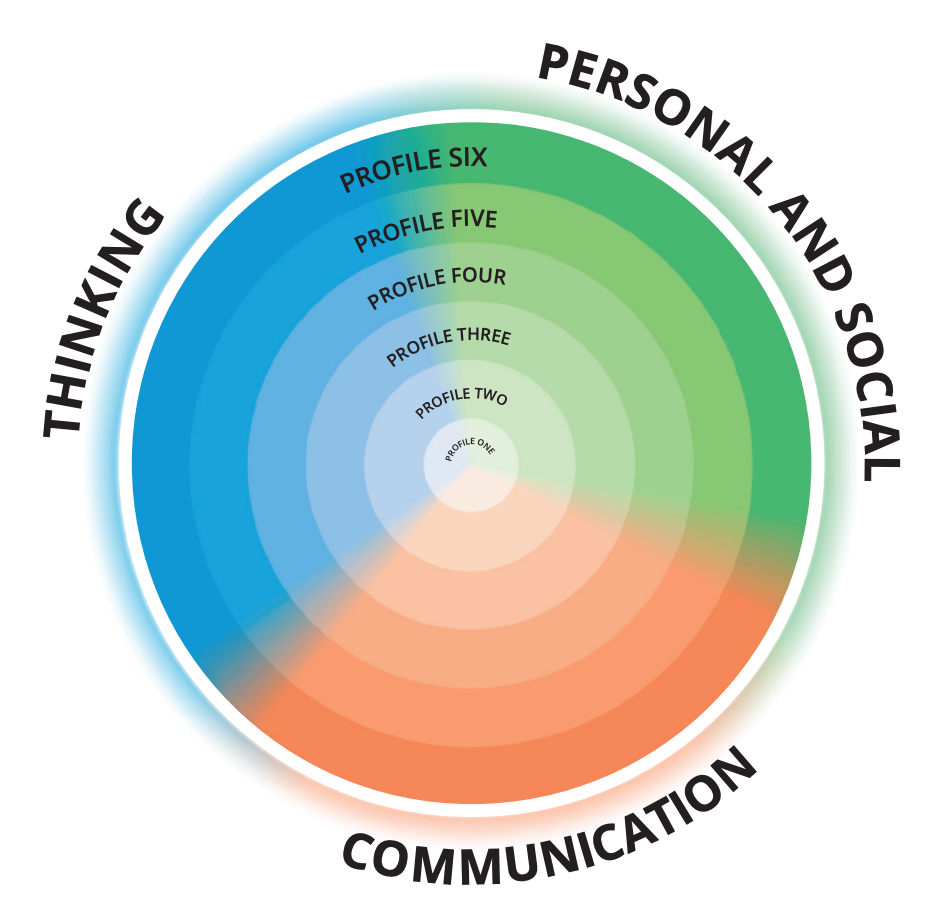Photo from: https://www.nsnews.com/news/virtual-reality-brings-the-world-to-west-vancouver-students-video-1.23298859
Introduction
Our generation has seen a large shift in technology over our lifetime. Growing up, personal computers were just coming out. Our home computer was in an open space and it was not used much. As I transitioned into school, we would have weekly visits to the computer lab for typing practice (All the Right Type). In high school, I had my own device and was using it to take notes, type papers, research information for school projects, and instant message friends of course! As we got older, Apple products started to be released, personal computers become more prominent, and the wealth of knowledge shared on the internet has grown substantially.
As we have gone through these different phases of technology use, we have adapted extremely well. Most people my age are quite technology literate and can adeptly problem solve and troubleshoot.
However, just a few generations above and below, they both seem to be at a loss. As the resident technology support at school and at home, I am constantly asked questions from students, colleagues, and family members about how to stop pop ups, how to reset passwords, and how to change the settings to project presentations.
It was been exciting to watch and engage with new and exciting trends in the world of technology. Especially as I have moved into my role as an educator. As I moved into the classroom, the conversation about students and technology was that students were more technology literate and we, as educators, needed to start leveraging those skills in order to increase engagement and excitement for learners.
However, in my experiences. That has not been the case. Students come in knowledgeable about how to use and access specific apps on phones and tablets, but when it comes to using devices to find information and share ideas – which I believe is the primary purpose – they seem to be unsure.
Summary
As Leanne mentioned in her blog, here are the top trends in educational technology as per our course readings:
- According to Labullier the top trends are: 1:1 learning devices, mobile devices, wearable technology, cloud computing, collaborative computing, robotics, internet of things and game based learning, STEAM/STEM and AR (augmented reality).
- Randles identified computational thinking, Professional Learning, AR, VR (virtual reality) and mixed reality, AI (artificial intelligence) and global learning, learning sciences and digital citizenship and student centered learning.
- Jobanputra identified them as customizable learning experiences, cloud computing, speech to text options, VR/AR, 3-D printing, learning analytics.
- Lambda Solutions identified coding, seamless resource access, remote learning and gamification and learning management systems.
- According to Technology in Education 2019: 5 Trends to watch, the top trends are classroom learning as a supplement to online learning, MOOC’s ( Massive online open courses), AR, 5G ( faster networks), content on demand, inclusivity/ exclusivity and collaboration.
- Jarman, sees them as: Smartboards, AI, AR, VR, blockchain technology, learning analytics and adaptive learning.
The commonalities between all of these are: AI, AR, VR, anytime/ anyplace learning (enhanced by mobile devices, 1:1 devices), global/collaborative computing/ learning and student centered/focused learning results.
Reflection
There are many things to consider when reflecting on these readings. When looking at these articles, it is important to question and wonder who is writing the articles. If an author has a connection or relationship with a technology company, it could easily persuade and direct the messaging that comes out. It is also important to think about how the author got their information, and for what audience is it for. It would be important to know if these trends were city, province, state, or country specific. And because the articles are not academic pieces of writing, how can we determine how reliable the information they are providing are.
I am currently teaching grade two in a small affluent school district in Metro Vancouver area. In our district, we are very lucky to have support and access to a variety of technology. At our site, we have iPads, Chromebooks, SmartBoard (not that anyone uses it anymore), access to the district set of VR headsets, use of Google Suites, FreshGrade learning and reporting portfolios, coding arcades, Math IXL, and free access to the Discovery Education platform. Students from kindergarten to grade seven have exposure and access to these different avenues. And our teachers are adept at making sure that the learning is developmentally appropriate and that it makes sense for their context.
We are also lucky enough to have quite a high ratio of students to devices. Students in grade four to seven are required to bring their own device and younger students have access to iPads and are starting to explore the use of a Chromebook. This access is invaluable as it allows learners to develop a sense of independence and connect with peers in their classroom, a classroom down the hall, or half a world away.
The exciting thing about AI, AR, and VR as mentioned in one of the articles, was that the predictive nature of it, it could take some pressure off the teacher and allow them to work more closely with the student in developing a learning plan and providing targeted support based on feedback from the automated device that is designed to catch irregularities.
In addition, many trends in education seem to be moving in the direction of student centered – as it should be! The classroom is a place for students to be excited and engage with the curriculum. With the addition of inquiry and concept based teaching, students are pushed to think critically and ask questions that go beyond what you can search on Google. Technology helps everyone to access information to help them on their learning journey.
However, here is where I agree with Holland and Holland. I strongly believe that students shouldn’t be given the technology just for the sake of using it. As they mentioned in their article:
“Students still need to have the knowledge and command of effective two-way communication skills including recording their thoughts, knowledge, opinions, discoveries, and inventions in a clear and concise way” (Holland & Holland, 2014).
There are many applications that can help students explore and practice those skills, but they are not the only way. Adoption of programs and types of educational technology is projected to increase, however, we as educators need to make sure that we are supplementing with other ways of knowing.
Biggest Trends in Educational Technology – My Perspective
In my context, things seem to change from year to year as excitement for the latest and greatest technology shift and change. But as it stands right now, these are the biggest trends in educational technology in my context.
- Global Learning – Not only connecting globally, but also connecting online with peers in order to be inclusive of students who are not able to make it into the building. Also, by connecting with people from all over the world, gaining real time news and information from all over the world, communication platforms (e.g. Mystery Skype, KidBlog, FlipGrid, etc.).
- Collaborative Computing – GoogleSuite, Kidblog, Padlet, FreshGrade – Allows students to share their information with a community in order to gain feedback and develop their understanding of a topic or concept.
- Coding – Learning the mechanics of computers and how to get it to do what you want (Coding Mice, BlueBot, Wonder, Dash, etc.)
- AI, AR, VR – Programs could not only help the teacher manage and catch any inconsistencies and patterns in student work, AR and VR are extremely motivating and exciting opportunities for students (Google Expeditions).
As you probably noticed, all of these trends are student centered and accessible for all learners.
Conclusion
I am so excited for all the amazing things that technology is bringing to the world of education. I think it is great that we are providing opportunities and the audience in which to safely share ideas, thoughts, and work. However, this quote really stuck out to me as thought provoking:
“It is not a bad things, but there are implications, whether it is simply a new medium, or whether we might be missing some of the underlying bits of important knowledge needed to carry us forward in a digital era” (Holland & Holland, 2014).
Is new always better?
There are so many new technologies out there and we want to ensure our students have access to exposure to the latest greatest thing. however, I am finding that we did so in the past, with out taking the time to consider the consequences. Something that is starting to come up more and more now is data security. Where is the information that students are sharing being housed? What information is being shared? What am I agreeing to in the Terms and Conditions? These are just a few questions that are now coming up.
I look forward to continuing on my edtech learning journey this term!
Resources
Holland, J. & Holland, J. (2014). Implications of Shifting Technology in Education. Tech Trends. 58(3), 16-25. http://vincross.net/wp-content/uploads/2018/07/Holland-Holland-2014.pdf





Recent Comments